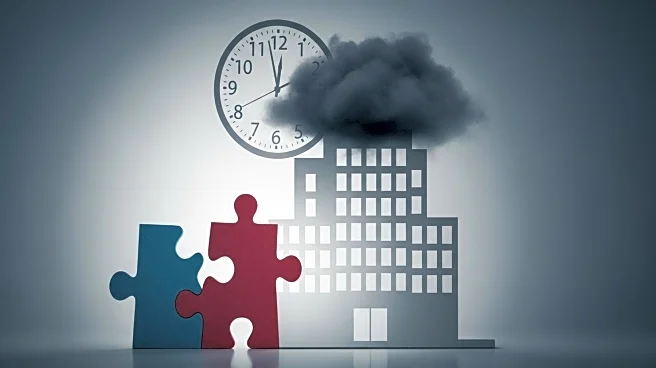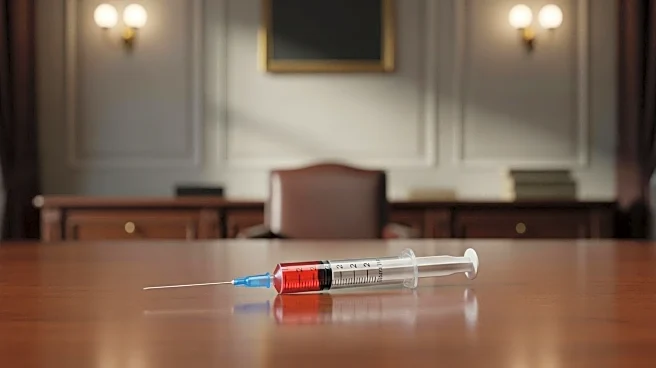What's Happening?
The Trump administration has laid off over 100 employees at the Substance Abuse and Mental Health Services Administration (SAMHSA) as part of a government-wide reduction in force during the ongoing government shutdown. The layoffs were reported to have occurred late Friday, with employees notified of the 'Reduction in Force' shortly before 8 p.m. ET. SAMHSA, which employed around 900 people, is responsible for overseeing the 988 suicide prevention hotline and distributing billions in grants for mental health and addiction services. The Department of Health and Human Services did not respond to requests for comment regarding the layoffs. Additionally, the Centers for Disease Control and Prevention (CDC) experienced staff cuts, although some of these were reversed late Saturday.
Why It's Important?
The layoffs at SAMHSA and CDC could significantly impact the nation's mental health and public health infrastructure. SAMHSA's grants are crucial for behavioral health services across the country, and reductions in its workforce may hinder its ability to support mental health initiatives effectively. The CDC's staff cuts, particularly in areas responsible for disease surveillance and outbreak forecasting, could weaken the U.S.'s public health capacity. These developments come at a time when mental health services are increasingly vital, and public health agencies are essential for managing health crises.
What's Next?
The future implications of these layoffs remain uncertain, but they could lead to reduced capacity for mental health and public health services. Stakeholders, including mental health professionals and public health officials, may advocate for reversing these cuts or finding alternative solutions to maintain service levels. The administration's approach to restructuring these agencies could face scrutiny from Congress and the public, potentially influencing future policy decisions.
Beyond the Headlines
The layoffs highlight broader concerns about the prioritization of mental health and public health in government policy. The reduction in force may reflect a shift in focus or funding priorities, raising ethical questions about the government's commitment to supporting vulnerable populations. Long-term, these changes could alter the landscape of mental health and public health services in the U.S., affecting millions who rely on these programs.











